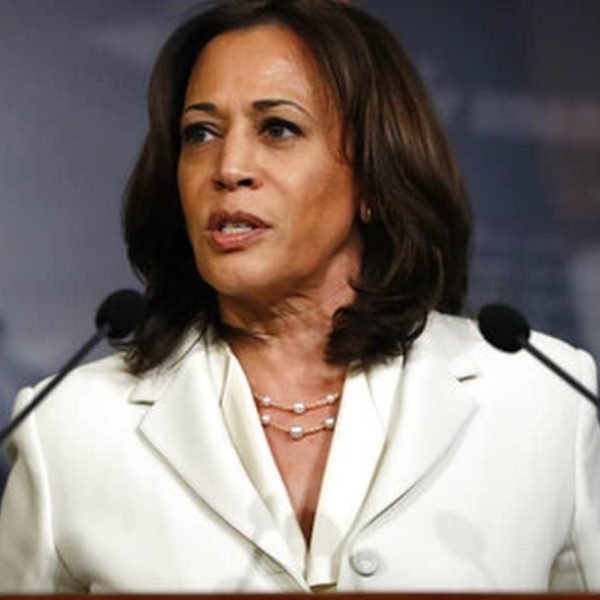After months of speculation, one of the biggest anticipated news stories arrived last week with the nomination of Kamala Harris as Joe Biden’s running mate. Loyal readers know that while I’m your devoted business leadership and communications columnist, I’m also a former CNN Washington reporter and still a political junkie. So, you won’t be surprised that this historic announcement has me going just a little bit.
Let me set the probably pre-produced, but nevertheless impactful, scene: The video embedded in Biden’s Twitter announcement shows the presumptive Democratic presidential nominee removing his face mask and leaning into his laptop. He addresses the screen, which is not facing us but we’re to imagine he’s looking at Harris, and he asks this question: “Are you ready to go to work?”
“Oh my god, I’m ready to go to work,” the voice of Harris is heard to answer.
She’s already a California Senator, former state Attorney General, former District Attorney and even a short-term presidential candidate. She clearly knows how to work. And now with Biden’s invitation, Kamala Harris notably becomes the first Black woman vice-presidential candidate in US history.
Her father was a Jamaican immigrant and her mother immigrated to the US from India. Both grad students at Berkeley in the 60s, they met as they became involved in the civil rights movement there and the first of their two daughters, Kamala, was born just a few miles away from the progressive campus in Oakland. Her parents divorced when she was young, and Harris credits her mother with teaching her early on that hard work would be expected of her.
Referring to her sister Maya and herself, Harris said, “My mother knew that she was raising two Black daughters who would be treated differently because of how they looked”.
How we look. There are a lot of things we might be able to change about our appearance, but setting aside Ireland’s love of fake tan, the colour of our skin is one thing we cannot. As the Black Lives Matter movement continues to grow, so too does the need for broad-based support and awareness in the workplace.
Throughout August, it’s Black Business Month in the United States, recognising Black-owned businesses and dedicating 31 days to boosting their entrepreneurial efforts, innovations and achievements.
Here in Ireland, there are hundreds of Black-owned businesses in a range of fields as diverse as food, fashion, tech and beauty. Whether or not Black-owned, there are people of colour in businesses and organisations everywhere. Together we are colleagues, managers, team-mates. While many workplaces remain virtual, there are still many ways to promote, establish or maintain an inclusive and supportive environment.
And while the ideas here today are geared toward bridging racial equality gaps in your organisation, they can be applied toward better connecting any groups or individuals.
1) Raise your awareness
In business or otherwise, complacency in relationships can foster resentment, or worse. The first step toward moving closer is acknowledging steps can be taken. In most cases, something more can always be done.
Examine your mission and values statements. Is the language clear about what constitutes inclusivity or discrimination? Do you actively recruit and promote a diverse team of competent employees? Further, do you and your other leaders consciously provide inclusive modelling behaviours? Pay attention to a culture that allows or ignores off-hand racist remarks, seemingly subtle comments, or out-right jokes. Don’t let anyone brush this kind of behaviour off as being “overly politically correct” either. That’s often a defensive excuse.
2) Start conversations
If you’re confused between what someone might be reasonably offended by or what someone might be overly sensitive to, have a calm and guided conversation about it.
The Black Women’s Agenda (BWA) based in Washington, DC, describes itself as promoting “greater understanding and co-operation while searching for new knowledge and new conceptualisations about said problems”. Not a bad starting place for any business to launch a conversation.
The BWA goes on to write that “bringing our country (or business) together starts with a meaningful conversation to reduce polarisation and social bias, to increase the willingness to engage in meaningful dialogue and create an increased understanding and appreciation for our differences and similarities. Relatedness is a basic psychological experience. We all need to feel connected to other human beings; to care and be cared for, and to belong”.
Hold regular, facilitated conversations and make sure every voice is heard. As I tell my own daughter, almost any question can be asked of someone else – if it’s asked politely and respectfully.
3) Take responsibility
One of my new clients – head of a large UK-based organisation – said this after our first virtual session together this past week: “It’s so important to learn how to develop positive leadership communications because I realise it’s my responsibility to my family, my employees and myself.”
Who is responsible for your professional and personal growth? As Johnny C Taylor, Jr, CEO of the Society of Human Resource Managers (SHRM), who happens to be Black, says: “At the end of the day, if professional development is not available or supported, you have choices, including looking for an employer that does believe in and is committed to professional development or developing your own plan at your expense”.
As Kamala Harris says: “Whenever I got upset about something, my mother would look me in the eye and ask, ‘So what are you going to do about it?”.
No matter what area, developing yourself is up to you.
Write to Gina at SundayBusiness@independent.ie With corporate clients in five continents, Gina London is a premier communications strategy, structure and delivery expert. She is also a media analyst, author, speaker and former CNN anchor. @TheGinaLondon







